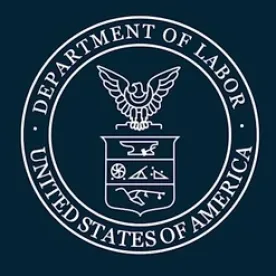On September 24, 2019, the US Department of Labor announced a finalized rule increasing the earnings threshold necessary for employees to qualify as exempt from the Fair Labor Standards Act’s (“FLSA”) minimum wage and overtime pay requirements. It is estimated the new Rule will bring an additional 1.3 million employees below the FLSA’s overtime requirements, making them non-exempt employees.
Why the change?
Employee earnings, including federal and state minimum wage requirements, have continued to grow since the last time the exemption thresholds were updated—all the way back in 2004. Though some have suggested the DOL should automatically update the salary threshold levels in the future, the DOL has rejected this proposal. But, the DOL has noted it plans to provide more frequent updates to the standards through notice-and-comment rulemaking.
What does the Rule do?
-
Raises the “standard salary level” for white-collar employees paid on a salary basis (either weekly or annually) from $455/week to $684/week (or an increase from $23,660/year to $35,568/year for a full-time employee).
-
For “highly-compensated employees,” the annual compensation threshold for exemption is increased from $100,000/year to $107,432/year.
-
Allows greater flexibility in the payment method of the minimum salary requirements, allowing non-discretionary bonuses and incentive payments (including commissions) to satisfy up to 10% of the standard salary level.
-
The Rule does not change the regulatory test for primary duty or the tests for the duties necessary for exempt executive/administrative/professional employees; it does not amend the definition of “salary basis;” does not apply a new compensation standard to doctors, lawyers, teachers or outside sales employees; and makes no change to the computer employee exemption.
What should employers do?
The effective date for the changes is January 1, 2020. There are several things employers should consider in determining how best to comply with the new Rule.
-
Employers should determine which and how many employees will be affected by the change—those making between $455 and $684 per week. An employer should then determine if it makes business sense to increase the salaries of those individuals or to reclassify them as non-exempt making them eligible for overtime pay.
-
For employees who will become non-exempt, employers should consider adjusting employee schedules, especially those which allow for flexible hours and remote working options.
-
Employers should ensure that the timekeeping and payroll systems are updated to reflect any changes in employees’ exempt/non-exempt statuses.
-
Employees transitioned to a non-exempt status should be trained on timekeeping systems and proper timekeeping practices to capture all time worked (including, but not limited to work performed on smart phones, on remote access systems, etc. – or eliminating these employees’ ability to conduct such work away from the office).
-
Employers should consider conducting audits to ensure that current classifications are proper as well as to determine if any other exemptions may apply to employees that otherwise will be brought into the non-exempt category by the new Rule.
Of course, employers should always be aware that being in compliance with this Rule and the FLSA, in general, is just a small part of their overall compliance requirements of applicable wage and hour laws. There are also state and local laws and regulations that employers must comply with that may significantly differ from the FLSA. Employers with questions or concerns should consult competent counsel.






 />i
/>i

